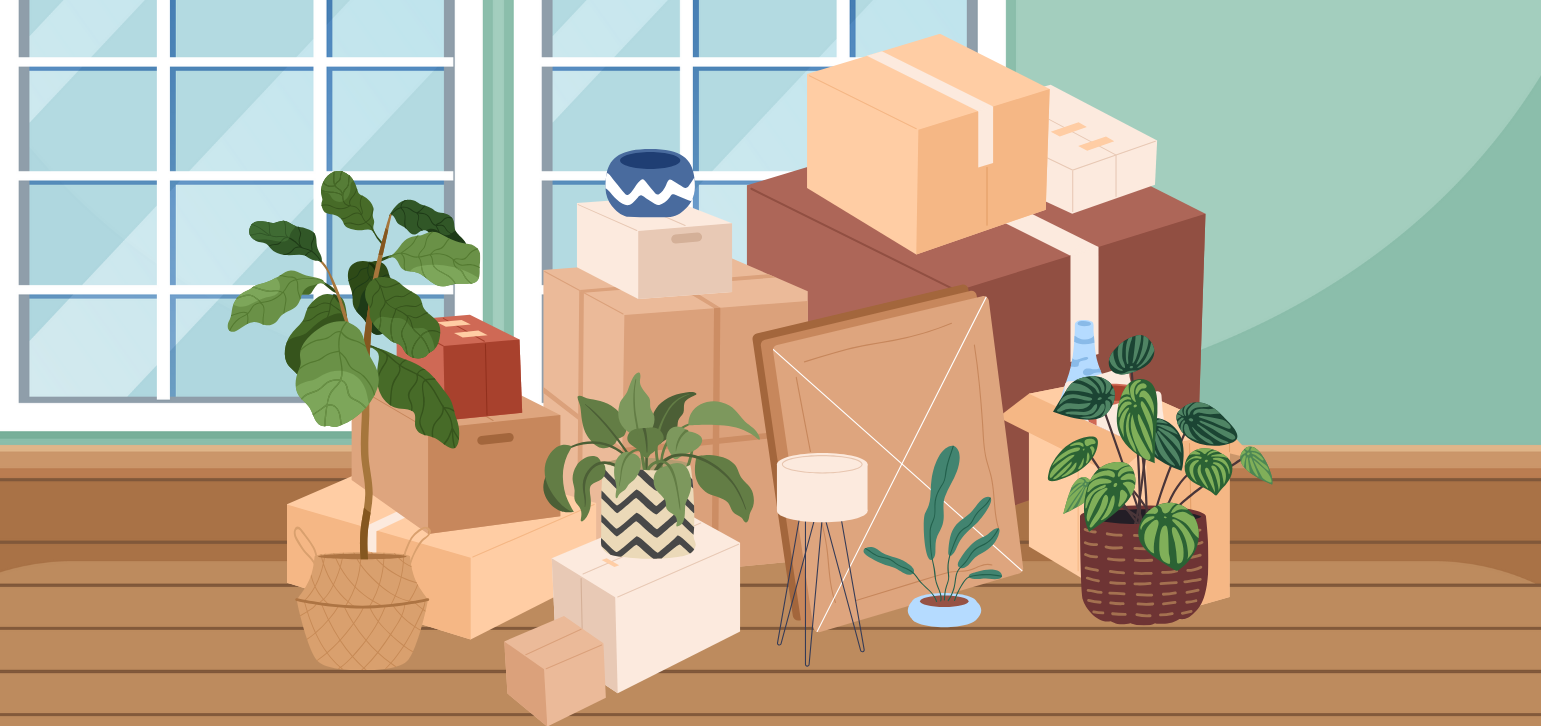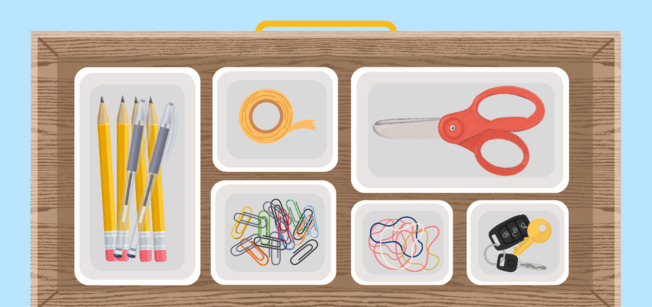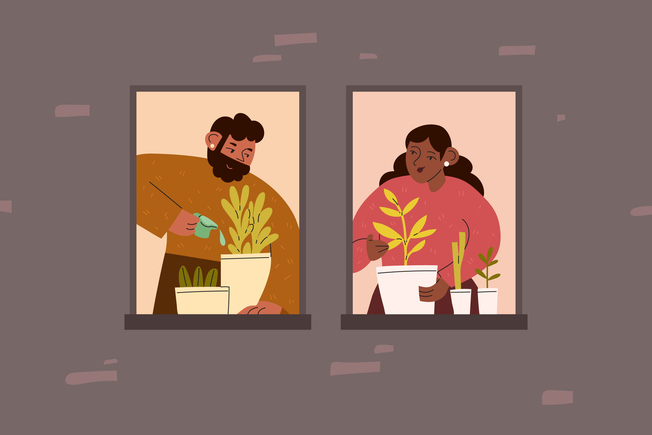
What is the Best Way to Pack Plants for a Move?

By Lilly Milman
Feb 26, 2024
Plants are perhaps the most delicate cargo that you’ll pack into a car or a moving truck when it’s time to move to another apartment, whether you have dozens of houseplants or just a few succulents — so how do you ensure that they don’t get damaged along the way? We spoke with John Selletto, owner of the gift and plant store Petali Flowers in Cambridge, MA, to get his expert moving tips for taking indoor plants to their new home.
Find a heavy box.
The best base for packing plants is a box that won’t break. Selletto opts for heavier milk crates over something lighter like a standard cardboard moving box because milk crates are less likely to tip over in a car or truck. Plus, with a milk crate, you can pull a rope through the gaps to “tie in” a potted plant for more security. You may have luck finding free milk crates at a grocery store or restaurant if they have extras that they are trying to get rid of, or you can buy them at a hardware store or online. A wooden crate would also work. Multiple, small plants will fit in a crate or just one or two larger plants.
Pad the box with newspaper.
One way to make sure your plants don’t get harmed is by limiting how much they’re able to move. Once you’ve placed your plants in your milk crate, Selletto recommends taking some sheets of newspaper, packing paper, bubble wrap, or whatever packing material you have and tucking it in the spaces between the plant pots. This will prevent the pots from knocking against each other and reduce the likelihood that one will break, especially if they’re in ceramic pots or clay pots. Plastic pots will be less of an issue. If you’re worried your plant will tip over or if it needs to sit at an angle in your car, then place some newspaper over the soil and tape it in place. This is one way you can limit the amount of soil that spills out, Selletto says.
Secure extra tall plants with a garbage bag.
While Selletto doesn’t recommend this trick for a long-distance trip, like if you were relocating across state lines, it can offer a layer of extra security for big plants on short moves, like if you were just moving from one neighborhood to another. If you are worried about leaves breaking off of tall, delicate plants — say, a monstera — then you can use a garbage plant to protect the leaves. “Take a big garbage bag, open it up. Sit the plant inside and slowly pull up the bag and bring all the leaves to the top,” Selletto says. The reason that he doesn’t recommend this for long trips is that the bag will trap heat and limit airflow, which could end up causing more harm than good. You’ll want to be especially careful if you are in an area with extreme temperatures.
Water your plants before a long trip.
If your moving trip will take longer than one day, you should water your houseplants before you head out. Depending on how long your trip is — like if you’re going from the East Coast to California, Selletto says — you’ll also have to think about how your plants are going to get light. Even low light plants can’t be in total darkness for several days in the back of a truck during a long-distance move. Consider putting them in a personal vehicle that’ll get some direct sunlight from the windows if you can.
Pack your plants last.
Whether you’re packing up a moving truck or your sedan for a move, put your plants in last on moving day. In a moving truck, your plants will be safest if they go in at the end after all of the heavy furniture and boxes. Just make sure they’re placed in a way that’ll prevent them from tipping over. If you’re just packing your car for a move, then the floor of the backseat can be the safest place for them if they’ll fit. Otherwise, you can place plants in the trunk. Just try not to stop short and knock anything over.
Put your plants in the truck by yourself.
If you hired a moving company to pack a rental van or moving truck for you, then the ugly truth is that they likely won’t take as good of care of your plants as you would. For that reason, Selletto prefers to take charge of packing plants in a truck — or, if not, he at least asks professional movers to be very careful with his plants.
Unpack your plants first.
Getting packed tightly in a crate, moved away from a light source, and potentially even covered with a plastic bag are all things that could damage a plant long term. That’s why, as soon as you get your stuff to your new place, you should prioritize unpacking your plants and putting them near a light source in their new environment. “Unpack them carefully and let them start to take in the air in their new location,” Selletto says.
Tend to any plants that were damaged.
Even if you took every precaution while moving, it’s possible that your plants will still incur some damage — especially large leafy ones or fragile flowering plants. Breakage is an inevitable part of moving, even if you have really healthy plants. “You are going to damage the plants, no matter how careful you are,” Selletto says. But if a leaf snapped off a large plant in transit, don’t worry. “Cut the stem down at the base of the plant, and new shoots will come up.”
Top metro areas
Atlanta Metro Apartments
1,467 apartments starting at $600/month
Austin Metro Apartments
1,406 apartments starting at $522/month
Baltimore Metro Apartments
736 apartments starting at $500/month
Boston Metro Apartments
5,089 apartments starting at $650/month
Charlotte Metro Apartments
886 apartments starting at $475/month
Chicago Metro Apartments
3,470 apartments starting at $400/month
Dallas Fort Worth Metro Apartments
2,738 apartments starting at $400/month
Houston Metro Apartments
1,064 apartments starting at $450/month
Las Vegas Metro Apartments
1,038 apartments starting at $670/month
Los Angeles Metro Apartments
4,759 apartments starting at $700/month
Miami Metro Apartments
572 apartments starting at $1,025/month
Milwaukee Metro Apartments
800 apartments starting at $500/month
New York Metro Apartments
2,166 apartments starting at $945/month
Orlando Metro Apartments
996 apartments starting at $550/month
Philadelphia Metro Apartments
1,748 apartments starting at $450/month
Phoenix Metro Apartments
1,571 apartments starting at $700/month
Pittsburgh Metro Apartments
1,064 apartments starting at $500/month
Portland Metro Apartments
1,727 apartments starting at $695/month
Raleigh Metro Apartments
807 apartments starting at $575/month
San Antonio Metro Apartments
1,036 apartments starting at $450/month
San Diego Metro Apartments
1,528 apartments starting at $590/month
San Francisco Metro Apartments
1,710 apartments starting at $850/month
Seattle Metro Apartments
1,526 apartments starting at $525/month
Tampa Metro Apartments
1,044 apartments starting at $725/month
Washington Metro Apartments
715 apartments starting at $550/month


